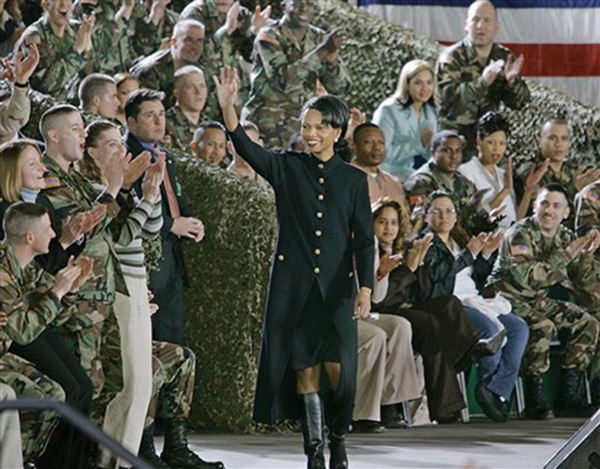The Power Suit
Women Leaders Dress the Part
The Power Suit connotes authority, strength, and leadership. Yet the term also implies that power -- especially for women -- is not a birthright as it is for men. It is something that can be acquired and put on. And something that can be stripped away. The power suit is akin to armor, outfitting a woman to do battle in a predominantly male world.
What does the Power Suit look like as it shifts through different times and cultures? For some, such as the ancient Egyptian ruler, Hatshepsut, the power suit was conceived in male terms. Hatshepsut appeared not as queen but as king, dressed in a royal male headdress, kilt, and false beard. She even crowned herself with the title of Pharaoh, something unheard of for a woman in her time; she was known as His Majesty.
Other women, notably Trieu Au, known as the Vietnamese Joan of Arc, and Radiyya Iltutmish, the first female Moslem ruler of Northern India, also eschewed female garb, opting instead to dress as male warriors as they led their respective troops in battle -- Au in golden armor and Iltutmish in a turban and trousers.
For others, like Marie Antoinette, the Power Suit meant spectacle, flamboyance, and opulence. From her furs and lavish ball gowns to her pouf hairstyles replete with battleships, Marie Antoinette's sartorial statements made her larger than life. At first she was emulated, then despised for her spectacular dress, which became linked with all that was decadent in French aristocracy.
Is it possible for a woman in politics today to be feminine in her dress and still be taken seriously? Can she reveal her sexuality and not lose authority? The answer seems to be a qualified yes. Though Condoleezza Rice's sexy black boots and Hillary Clinton's hemlines still make front-page news, it appears we are at an evolutionary turning point. Have we landed at a new moment in history? One in which women can redefine power and politics as they are expressed through dress? The script continues to be written, and the Power Suit reflects these changes.


